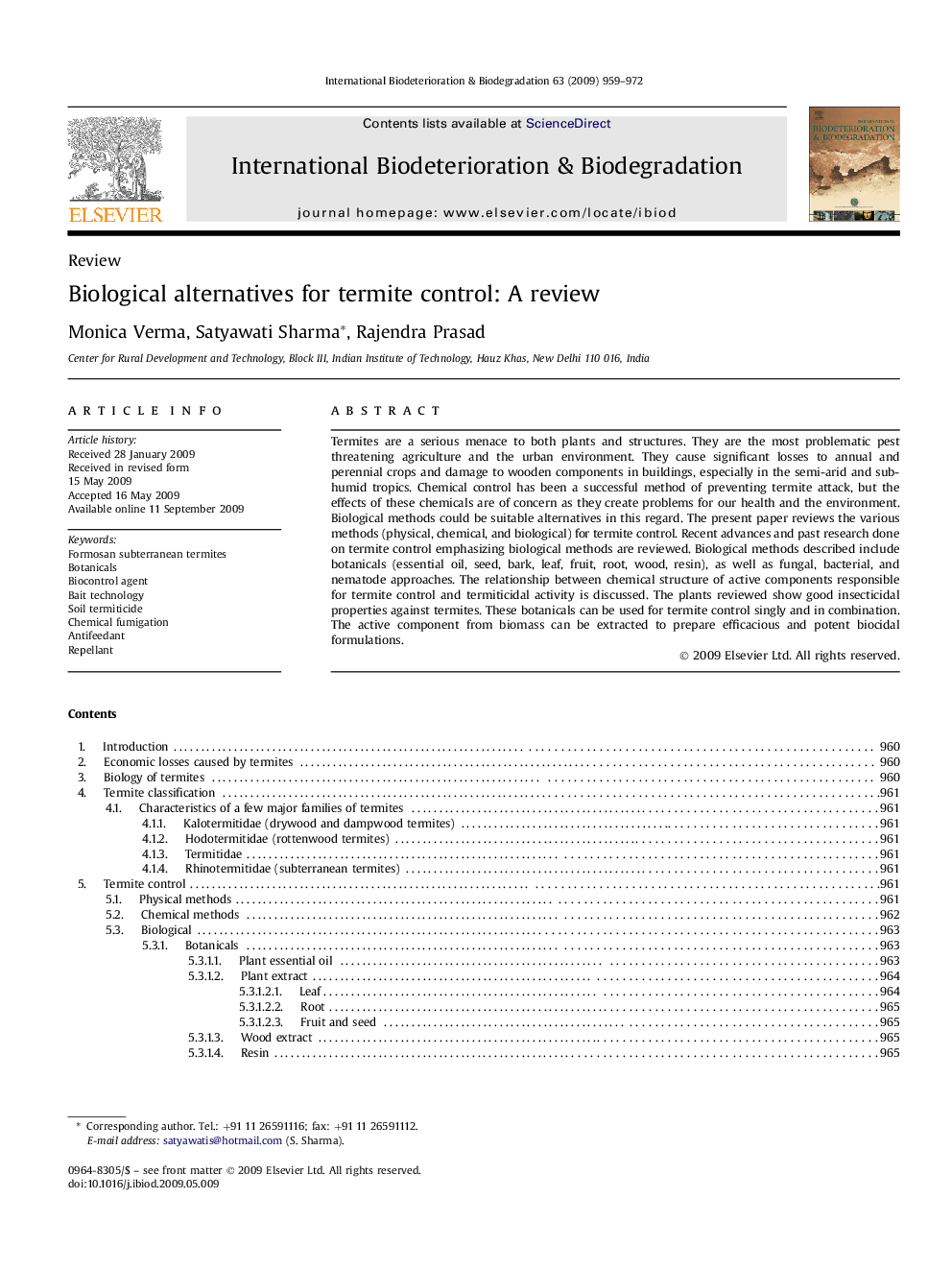| Article ID | Journal | Published Year | Pages | File Type |
|---|---|---|---|---|
| 4365830 | International Biodeterioration & Biodegradation | 2009 | 14 Pages |
Termites are a serious menace to both plants and structures. They are the most problematic pest threatening agriculture and the urban environment. They cause significant losses to annual and perennial crops and damage to wooden components in buildings, especially in the semi-arid and sub-humid tropics. Chemical control has been a successful method of preventing termite attack, but the effects of these chemicals are of concern as they create problems for our health and the environment. Biological methods could be suitable alternatives in this regard. The present paper reviews the various methods (physical, chemical, and biological) for termite control. Recent advances and past research done on termite control emphasizing biological methods are reviewed. Biological methods described include botanicals (essential oil, seed, bark, leaf, fruit, root, wood, resin), as well as fungal, bacterial, and nematode approaches. The relationship between chemical structure of active components responsible for termite control and termiticidal activity is discussed. The plants reviewed show good insecticidal properties against termites. These botanicals can be used for termite control singly and in combination. The active component from biomass can be extracted to prepare efficacious and potent biocidal formulations.
